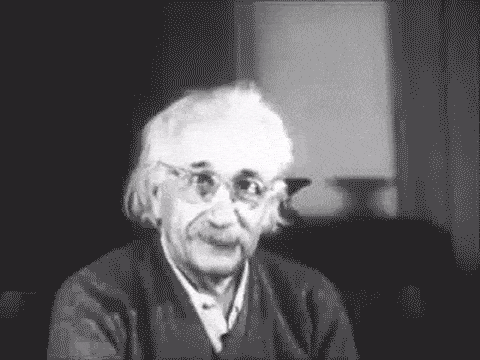“If you can’t explain it simply, you don’t understand it well enough.”
-Curtis Killen, President, KBD
Alright fine, you caught us.
That’s an Einstein quote.

But when it comes to insurance, we take it to heart.
That’s why we always try to explain insurance as simply as possible.
That’s also why we train our auto insurance brokers to explain insurance policies using plain language and real-life examples rather than legal jargon.
And why we strive to be as transparent as possible with customers — and that includes right here on our blog.
Insurance seems like something complicated to those outside the industry.
When I first started with KBD, I had that impression too.
But I quickly realized that insurance is mainly common sense… as long as you explain it in plain language.
So that’s what we do.
The problem is, nearly everyone has or needs insurance.
As drivers, we have no choice.
That means a lot of people spending a lot of time trying to decode policies and cut through complicated terminology.
So here’s your common sense, easy-to-understand auto insurance explanation.
Let’s start from the beginning.
If you have a car, you need insurance.
The main purpose of insurance is to protect car owners.
While you might feel like you’re just throwing money away, its actual purpose is to ensure you don’t lose money as a result of an accident.
Accidents are accidents. Shit happens.
Your insurance policy serves to put you in the SAME financial situation you were in before the accident.
Not better, but not worse.
So let’s say you own a car and you’ve totalled it.
You submit a claim to your insurance company. They reimburse you for the value of the car.
That’s great.
You haven’t lost any money, and assuming you’re physically healthy, it’s almost like it never happened.
But wait a second — you bought your car for $50,000, and the insurance company only gave you $30,000.
What’s the deal?
An insurance company will always determine the value of the car at the time of the accident (referred to as actual cash value).
In your case, it was four years after purchase.
As you may have heard 400 times, a car depreciates in value as soon as you drive it off the lot.
So in the above example, the insurance company deems the car worth 60% of its original value (again, a total estimate here) and that’s exactly what you get.
Car insurance is not there for you to WIN.
You can’t make money off an accident.
It’s there so you can break even and move on with your life.
Pro tip: An insurance product called replacement cost would freeze the value of your car and pay you the difference between actual cash value and replacement cost in the event of a claim.
Quebec auto insurance laws
You now know that, in Quebec, car insurance is the law.
Let’s get more specific about how it works.
Direct Compensation Agreement (DCA)
The DCA applies when two or more cars registered in Quebec are in an accident.
The GAA gives a pretty good explanation of how it works.

Here’s the KBD explanation.
Imagine that any time you’re driving your car, you’re in your own bubble.
Even though it can appear to go against logic, each driver is only responsible for their own bubble.
Rule #1) You’re ALWAYS responsible for repairing the damages that are done to your car. ALWAYS.
- Even if someone else is 100% responsible for the accident, you pay your own repair cost.
Rule #2) You are NEVER responsible for repairing the damages done to another vehicle. NEVER.
- Even if you’re 100% responsible for an accident, you are NOT responsible for paying for someone else’s damages.
I’m responsible for the damages done to my car, you’re responsible for the damages done to your car. Simple.
But it wasn’t always like this.
Prior to the Direct Compensation Agreement, if you caused an accident that damaged another vehicle, you would be held responsible to pay repair costs.
In clear cut cases where there was one responsible party and one non-responsible party, the Quebec car insurance companies would pay out with ease.
But what about the claims where both parties involved in the accident claimed they were each not at fault?
And this happened a lot.
These situations would be settled in court.
Claim settlements could take years, which meant clients had to wait until the verdict was met to get the insurance money.
Additionally, insurance companies were spending fortunes on lawyer fees to fight these battles.
So to avoid lengthy court cases, delayed settlements, and massive lawyer fees, the insurance companies decided to create the bubble system described here.
Quebec Bodily injury
In Quebec, drivers cannot be sued for causing bodily injury to another person.
In some other provinces, you can (Ontario, for example).
But here, those types of incidents are covered by public auto insurance, provided by the Société de l’assurance automobile du Québec (SAAQ).

The SAAQ provides no-fault insurance to Quebec drivers that applies to traffic accidents anywhere in the world, regardless of whether or not you are responsible.
And that’s why we pay more than other provinces do for our automobile registration each year.
We’re paying into a pot that is ultimately used in part to fund those types of bodily injury claims.
Quebec Mandatory coverage
Damage to property, on the other hand, is covered by your private insurance.
That policy, by law, must include civil liability protection.
What is civil liability insurance?
It’s the coverage that pays for damages in the event an accident occurs in which you were responsible and in which damage was caused to a third-party.
This applies as long as we’re not talking about another vehicle.
Say you hit a building or smash a streetlight.
In each scenario, no one but you was at fault.
Any resulting damages would be covered under civil liability protection.
Is there an amount of insurance you need by law? There sure is!
Each province has its own minimum.
Quebec law states that every driver must carry $50,000 in civil liability coverage.
KBD states that $50,000 isn’t enough.
We recommend carrying the maximum $2,000,000, which will only cost you an extra $45/year.
At that point, you’d be crazy not to spring for the full amount!

If you do decide to go for the bare minimum, you risk having to pay out of pocket if anything major happens.
Caused damage to a building? There’s a good chance those repairs are going to cost north of $50k.
Got in an accident in the U.S.? You know how Americans like to sue.
Are there other types of coverages you should know about? Yep!
But more on that later.
A policy with only civil liability coverage is what we in the biz refer to as one-way insurance.
What is one-way insurance?
You’re sitting at a red light.
You’re belting out every word to your favourite Shawn Mendes song.
And suddenly, BOOM. You get run from behind.
Not your fault at all — it was all the other driver.
If you have one way coverage, you’re covered.
Now, say you were driving along, picking out your favourite Mendes track on your phone, and were so distracted that you rammed the car in front of you.
Sorry — you’re not covered!
That’s because one-way coverage only protects you when the accident was not your fault.
When you have one-way insurance, you’re only covered for non-responsible accidents and civil liability.
If you want coverage for accidents in which you were at fault, you need two-way insurance.
What is two-way insurance?
With two-way insurance, you’re covered for any traffic accident or damage to your car, regardless of whether you were responsible.
T-boned by another driver? You’re covered.
Ran into a parked car for no good reason? You’re covered.
Crazy ex-girlfriend took a bat to your windshield? Sounds like you need a restraining order.
But you’re covered.

Direct compensation property damage, or DCPD coverage, is the part that covers those costs for you quickly in those cases when you’re not at fault and you can identify the person that is.
Two-way insurance as a whole covers just about everything that might happen to your car.
Fire, theft, vandalism, hit & run — you name it.
The extra insurance cost is worth it in most cases.
Does my auto insurance provide full coverage?
Yes, every insurance company can give you full coverage, which is just another way to say two-way coverage.
Since we just explained what two-way insurance covers, we’ll explain here how to find out for yourself whether you have it.
At KBD, we’re trying to encourage people to use their insurance company’s website or app to access their insurance information.
You could pick up the phone and call your insurance provider, but rather than waiting on hold and actually having to talk to someone, we think you might prefer to do this digitally.
On your insurance documents, look for the perils covered by your insurance contract.
To have full coverage, your policy needs to include three coverages:
- Section A – Civil Liability (non-responsible accidents)
- B2 — Collision/loss of control (responsible accidents)
- B3 — Comprehensive (fire, theft, vandalism and glass breakage)
You need to see a dollar amount next to each of those coverages.
Like this:

Here’s what a one way auto insurance policy looks like:

See the difference?
For a one way insurance policy, “excl” will be marked on your papers for section B; this signifies that collision + comprehensive coverage isn’t included.
If both B2 and B3 appear with your deductible next to them, you have full insurance coverage!


